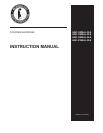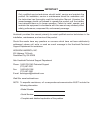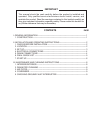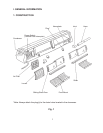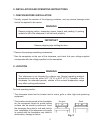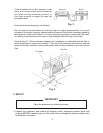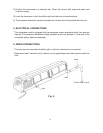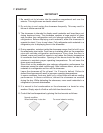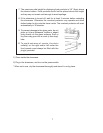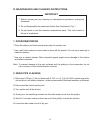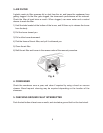
6
7. START UP
IMPORTANT
1. Be careful not to let water into the machine compartment and over the
exterior. This might cause an electric shock hazard.
2. Do not plug in and unplug the showcase frequently. This may result in
failure or shorter service life.
3. The showcase is intended to display sushi materials and keep them cool
during business hours. The showcase contains a large amount of glass
and provides less refrigeration and cold storage capacity than ordinary
refrigerators. Before displaying sushi materials, allow the showcase to
operate for about 1 hour to cool down. Fully refrigerate sushi materials in a
refrigerator prior to displaying them in the showcase.
4. During operation, moisture inside the showcase causes frost to build up on
the evaporator pipe inside. Frost has an insulating effect on the evaporator
pipe and reduces refrigeration performance. Every time the door is
opened, warm and humid air comes in and raises the interior temperature
to accelerate frost formation. Opening of the doors should be kept to a
minimum to maintain proper operating temperatures. Do not leave the
doors open continuously.
Since frost on the evaporator pipe reduces refrigeration performance, the
showcase cannot be used continuously. After business hours, return sushi
materials to a refrigerator and turn off the showcase.
Leave the showcase off for at least 1 to 2 hours to defrost. Failure to
defrost the showcase will result in improper operating temperatures.
In some conditions, frost may build up in a short time and reduce cooling
performance. In these conditions, defrost the showcase as needed
during the day. While defrosting the showcase, move sushi materials to a
refrigerator to prevent deterioration.
5. It is normal to find condensation on the showcase in a humid or rainy
weather. Simply wipe it off with a soft cloth from time to time.
6. Control the food temperature by placing the food mounts as follows:
Normal condition
When food temp. is too low For more intensive cooling



